This article was co-authored by Laura Marusinec, MD. Dr. Marusinec is a board certified Pediatrician at the Children's Hospital of Wisconsin, where she is on the Clinical Practice Council. She received her M.D. from the Medical College of Wisconsin School of Medicine in 1995 and completed her residency at the Medical College of Wisconsin in Pediatrics in 1998. She is a member of the American Medical Writers Association and the Society for Pediatric Urgent Care.
There are 7 references cited in this article, which can be found at the bottom of the page.
This article has been viewed 294,781 times.
Having a sick child can be worrying, especially when a child is vomiting and nothing seems to stay down. But take heart — vomiting usually is not a serious issue and usually, you can treat these symptoms at home until symptoms pass. However, if problems are severe, become chronic or are coupled with other symptoms seek medical evaluation.
Steps
Practicing At Home Care
-
1Keep your child hydrated. A lot of liquid is lost through vomiting. You should strive to keep your child hydrated for the duration of their sickness. Water is the best liquid, but varying drinks will help encourage fluid intake.
- Encourage your child to take small, slow sips of liquids frequently, every five to 10 minutes if possible. Try to have a beverage by them at all times.[1]
- Stick to clear liquids for the most part.[2] Some sour, carbonated drinks like ginger ale and lemonade could also help. [3]
- Ice pops, Popsicles, Italian ices, and other ice-based treats can take the place of liquids. These should be water-based frozen treats, not ice cream (the milk solids will often irritate sore stomachs). While these should not be the sole intake of liquids, many children will happily enjoy these treats. Also, because they cannot slurp or gulp down these items, they tend to go at a pace more friendly for the stomach.
- Soups can help hydrate, too. Choose clear, broth-based soups and avoid tomato, potato, and cream based soups. Soups like the classic chicken noodle soup is an excellent choice.
- Be careful with sports drinks. While they contain water, electrolytes, and taste good, they are highly concentrated. This can actually make things worse. A pediatric re-hydration fluid or water is usually better.
-
2If your child is actively vomiting, keep your child off solid foods for 24 hours. For the first 24 hours of an illness that causes vomiting, your child should not eat solid foods. Use electrolyte solutions for children, asking your pediatrician for a recommendation. Other than that, give your child things like gelatin, sugar water, and popsicles instead of solid food. [4]
- Most children who are actively vomiting will not want to eat anyway.
- A few children will really want to eat while nauseous; they usually confuse stomach cramps with hunger pains. If your child has a habit of this, be aware and wary.
Advertisement -
3Avoid strong odors and other nausea triggers. Some children (and people in general) find odors a nausea trigger. The smells of food and cooking, perfume, smoke, heat, humidity, and flickering lights can all worsen symptoms of nausea. However, this varies from person to person. But if they do complain, keep them in a comfortable, well-lit room where strong smells do not reach.[5]
-
4Have the child rest. Usually a child who is nauseous will be fairly lethargic anyway. But sometimes children will ignore symptoms if they are excited or absorbed in an activity. Some children will become a bit hyperactive when feeling sick. But too much physical activity can make your child's symptoms worse. [6]
-
5Ask a pharmacist about over-the-counter medications. Over-the-counter anti-nausea medications may help with nausea. However, many options are not safe for children. Ask your doctor or a pharmacist for a recommendation for an over-the-counter medication that might help a child with an upset stomach. Make sure to follow all instructions on the package when giving your child the medication.[7]
-
6Give your child bland foods. After 24 hours, you can start giving your child solid foods if the vomiting has resolved. Foods with little taste or texture might be easier for a child to keep down.
- Many pediatricians used to recommend what is the BRAT diet. This stands for bananas, rice, applesauce, and toast. These foods were believed to be easier to digest, allowing the gut a chance to rest and recover. Modern pediatricians feel the diet lacks enough nutrients to promote healing. However, for the first few days a child is sick the BRAT diet may help. Such foods may be easier to keep down due to nausea. Try feeding your child these foods and after a day or two resume a normal healthy diet filled with healthy carbohydrates, fruits, and vegetables.[8]
- Gelatins (such as Jello) and crackers may also be easier for a child to keep down. If they are able to eat such foods, try cereal, fruit, and salty or high protein foods.[9]
- High fat and spicy foods should be avoided as they can worsen symptoms. You should not try to feed your child solid foods until at least six hours after vomiting.[10]
Seeking Medical Care
-
1Know when medical care is necessary. Nausea is usually the result of a mild bug or flu and does not require medical attention. However, under certain circumstances you should make an appointment with a pediatrician.
- Your child should see their doctor if the vomiting lasts more than 24 hours, or 12 hours in a baby under one year old.
- Babies and small toddlers are much more prone to dehydration than older children. An infant who has been constantly throwing up may need medical intervention far quicker than a teen. If your child shows signs of dehydration, such as a dry mouth, no tears when crying, weakness or dizziness, or decreased urination or activity, they should see the doctor.
- If your child appears to be vomiting blood or has bloody stools, take them to the ER immediately. This could be a sign of a serious medical condition.[11]
- If your child has a high fever with vomiting or diarrhea, or has severe abdominal pain, they should be seen by a doctor.
- If your child cannot keep clear liquids down, they may need an IV to rehydrate or a prescription medicine for nausea and vomiting. If you believe the cause is something that your child ate, you should take them in to rule out food poisoning or a nasty illness.[12]
-
2Take your child in for a physical. If your child's inability to keep food down does not clear up on its own, take them in for a physical. Your doctor will take a basic medical history and perform an exam. The doctor will also ask about existing medications and health conditions. Depending on your child's condition, extra tests such as blood work may be ordered.[13]
-
3Ask about medication. Your doctor may suggest putting your child on medication to treat the vomiting. Ask the doctor any questions you have about dosage and side effects.
- Some medications are used to stop or slow down the attacks. They include anti-nausea medications, anti-anxiety medications, and sometimes sedatives.[14]
- Preventative therapies are designed to reduce or eliminate bouts of vomiting and diarrhea. They're more likely to be prescribed if your child gets sick frequently.[15]
-
4Consider stress management training. If your child frequently has problems holding down food, stress might be an issue. Stress management training can help address underlying factors that may cause vomiting.
- Stress management training helps a person become aware of early signs of stress reactions. Relaxation techniques, such as deep breathing exercises, are usually taught early on. A therapist may also teach your child behavioral strategies to reduce stress.[16]
- If you're interested in stress management therapy for your child, talk to your doctor. They can give you a referral to a therapist. You might also be able to find a therapist by going through your insurance provider.
-
5Try nutrition therapy. Nutrition therapy addresses what your child has been eating with the goal of finding any food triggers that might cause vomiting. Usually, a registered dietician would work with you and your child to find meal plans that work for their specific needs. Ask your pediatrician about nutrition therapy. They should be able to recommend a dietician for you and your child.[17]
Ways to Keep a Child Hydrated and Schedule to Reintroduce Food
References
- ↑ http://www.mayoclinic.org/symptoms/nausea/basics/when-to-see-doctor/sym-20050736
- ↑ http://health.clevelandclinic.org/2014/07/what-causes-vomiting-and-what-should-you-do-about-it/
- ↑ http://www.mayoclinic.org/symptoms/nausea/basics/when-to-see-doctor/sym-20050736
- ↑ https://www.healthychildren.org/English/health-issues/conditions/abdominal/Pages/Treating-Vomiting.aspx
- ↑ http://www.mayoclinic.org/symptoms/nausea/basics/when-to-see-doctor/sym-20050736
- ↑ http://www.mayoclinic.org/symptoms/nausea/basics/when-to-see-doctor/sym-20050736
- ↑ http://www.mayoclinic.org/symptoms/nausea/basics/when-to-see-doctor/sym-20050736
- ↑ http://www.webmd.com/digestive-disorders/brat-diet
- ↑ http://www.mayoclinic.org/symptoms/nausea/basics/when-to-see-doctor/sym-20050736
- ↑ http://www.mayoclinic.org/symptoms/nausea/basics/when-to-see-doctor/sym-20050736
- ↑ http://health.clevelandclinic.org/2014/07/what-causes-vomiting-and-what-should-you-do-about-it/
- ↑ http://health.clevelandclinic.org/2014/07/what-causes-vomiting-and-what-should-you-do-about-it/
- ↑ https://my.clevelandclinic.org/health/diseases_conditions/hic_cyclic_vomiting_syndrome_in_children
- ↑ https://my.clevelandclinic.org/health/diseases_conditions/hic_cyclic_vomiting_syndrome_in_children
- ↑ https://my.clevelandclinic.org/health/diseases_conditions/hic_cyclic_vomiting_syndrome_in_children
- ↑ https://my.clevelandclinic.org/health/healthy_living/hic_Stress_Management_and_Emotional_Health
- ↑ https://my.clevelandclinic.org/childrens-hospital/specialties-services/programs-services/nutrition
About This Article
To treat a child who can’t keep food down, try to encourage your child to sip water regularly, as this will rehydrate their body after losing fluids from vomiting. Additionally, make sure your child rests, since too much physical activity can make their symptoms worse. If your child is actively vomiting, try to keep them off solid foods for 24 hours. After that, try and stick to bland foods like bananas, rice, applesauce, and toast, which allow your child’s gut to rest and recover. For more tips from our Medical co-author, including how to decide when to take your child to a doctor, read on!
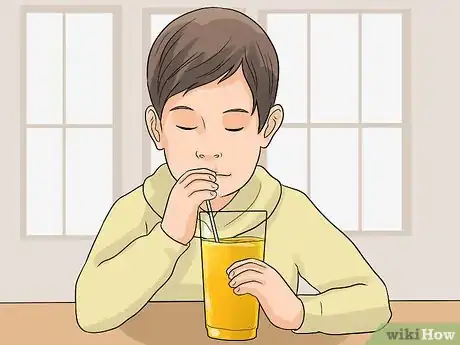
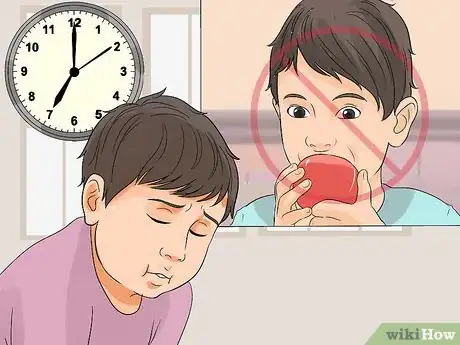

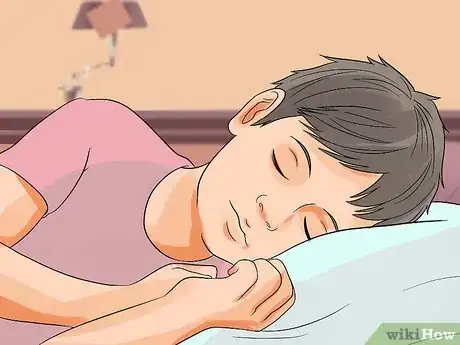
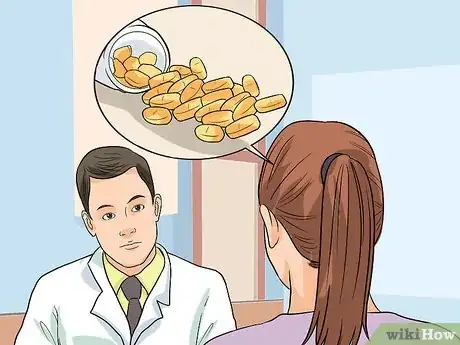
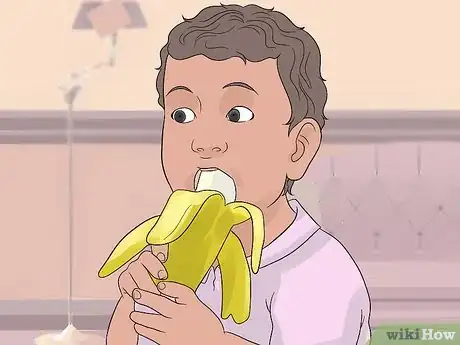
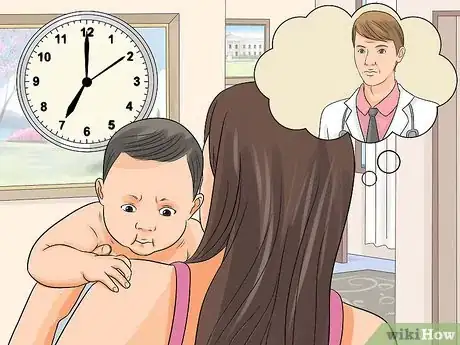

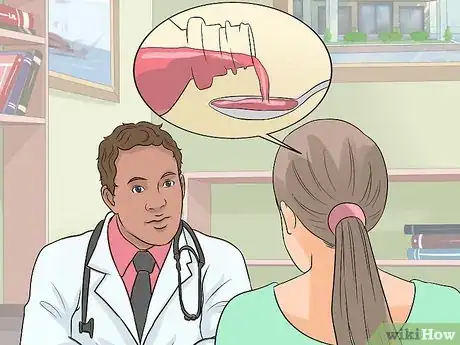
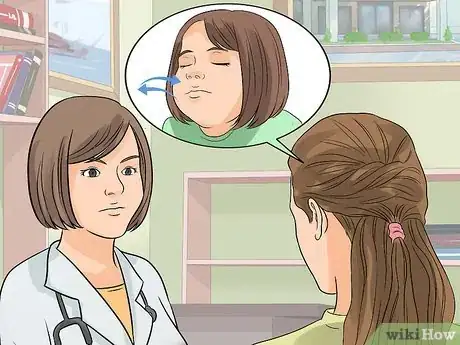
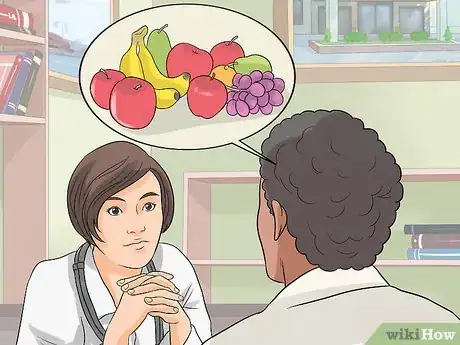



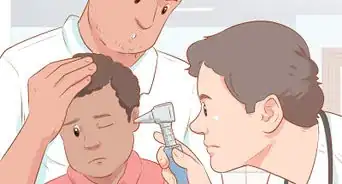

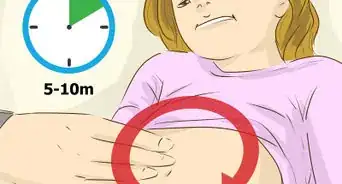


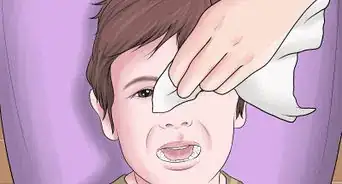

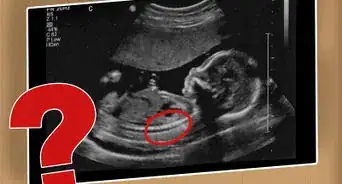
















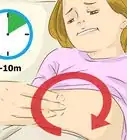



































Medical Disclaimer
The content of this article is not intended to be a substitute for professional medical advice, examination, diagnosis, or treatment. You should always contact your doctor or other qualified healthcare professional before starting, changing, or stopping any kind of health treatment.
Read More...